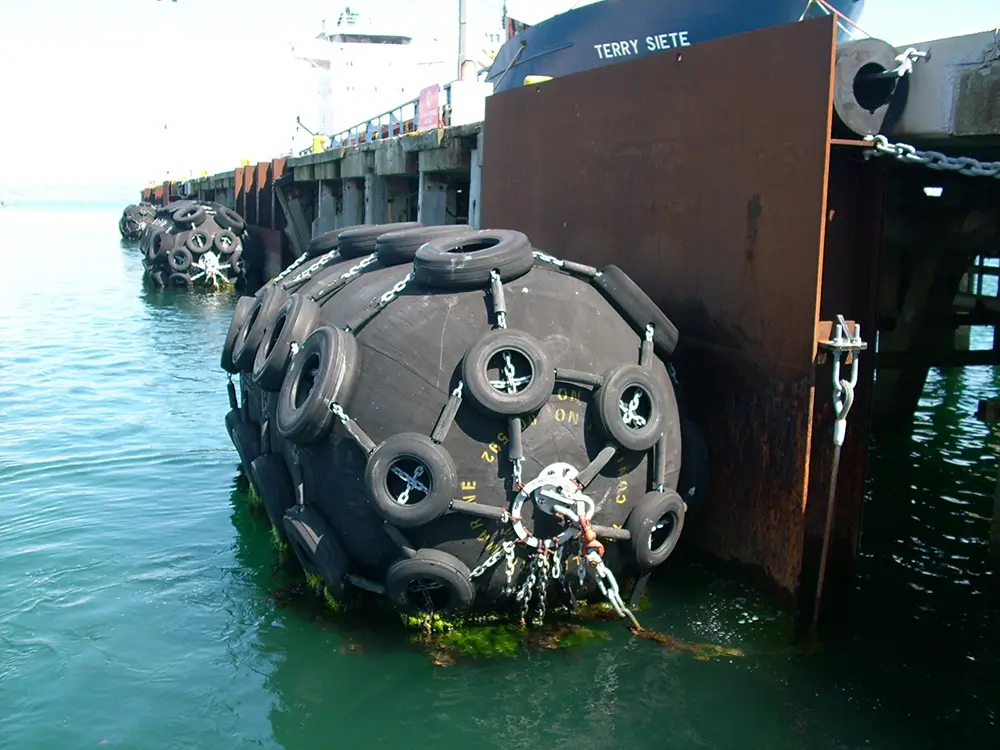Why Pneumatic Fenders Lead in Ship Protection
06/20/2025How UHMW-PE Faced Fender Panels Reduce Vessel Damage?
06/23/2025The impact of smart ports on marine fenders
Smart Ports & Marine Fenders: A Data‑Driven Partnership
Smart ports are transforming marine fender technology by embedding sensors and IoT systems into what was once a passive bumper, turning fenders into active assets that monitor real‑time impact, wear, and performance.
This shift helps ports move from reactive maintenance to predictive upkeep, reducing downtime, cutting costs, and improving safety at the quay.
This article helps port managers, operators, and marine engineers see how smart fenders reduce berthing risk, lower costs, and support sustainability—a triple win in a high‑pressure, high‑volume world.

Why This Is Necessary—and Urgent
Ports are swelling with larger ships, tighter schedules, and stricter sustainability standards. Marine fenders—the unsung heroes cushioning ship–dock contact—face unprecedented demands. Without innovation, ports risk costly berthing accidents, unexpected maintenance, and missed sustainability goals.
Imagine a major container port handling mega‑container ships every few hours. Traditional fenders wear out unpredictably, causing expensive disruptions. In a smart port, fenders equipped with sensors report unusual impact patterns or material fatigue before failure occurs. That real‑time insight helps port engineers schedule maintenance during low‑traffic windows, saving millions in potential delays.
Key Benefits of Smart Marine Fenders
- Enhanced safety & damage prevention: Sensors alert operators to abnormal impacts before they cause vessel or dock damage.
- Predictive maintenance: Continuous monitoring means maintenance is proactive, not reactive.
- Operational efficiency: Data on deflection, berth occupancy, and impact forces support smarter berth allocation and port planning.
- Extended lifecycle & sustainability: By optimizing wear and preventing misuse, ports reduce replacement frequency and environmental impact.
A Featured Snippet You’ll Love
Smart marine fenders are traditional rubber bumpers enhanced with IoT sensors that monitor impact forces, deflection, and wear in real‑time. This data enables predictive maintenance, enhances berth efficiency, extends fender lifespan, and improves safety at smart ports.
Real‑World Examples Driving the Change
- Trelleborg’s Solid SmartFender monitors berth activity and fender performance and transmits data to the SmartPort cloud for analysis on a smartphone or tablet.
- Now, Nanhai’s fenders with QR codes provide instant access to manufacturing history, inspection records, and maintenance alerts, streamlining asset management.
Want to Keep Reading?
Continue diving into:
- Overview of Rubber Fender Technology Development
- Arrangement and selection of pneumatic rubber fenders
- Are Pneumatic Fenders Recyclable? Environmental Considerations
- Where to Buy Quality Foam Fenders
FAQ
- What is a smart marine fender?
A marine fender equipped with IoT sensors to capture berthing impact, deflection, and wear, enabling real‑time monitoring and predictive analytics. - How do smart ports change fender design?
They transform fenders from passive buffers into data‑gathering assets, enhancing materials and structural design (e.g., cellular cores, reinforced sensors). - What data do smart fenders collect?
Impact force, deflection, distance to quay, temperature, vibration, and even usage frequency and wear level. - Are smart fenders more expensive?
Yes, upfront costs are higher, but data shows ROI through fewer berthing incidents, less unplanned maintenance, and longer service life. - Which ports are using smart fenders now?
Leading ports in Rotterdam, Singapore, the Middle East, and North America are piloting or installing smart fender systems.
